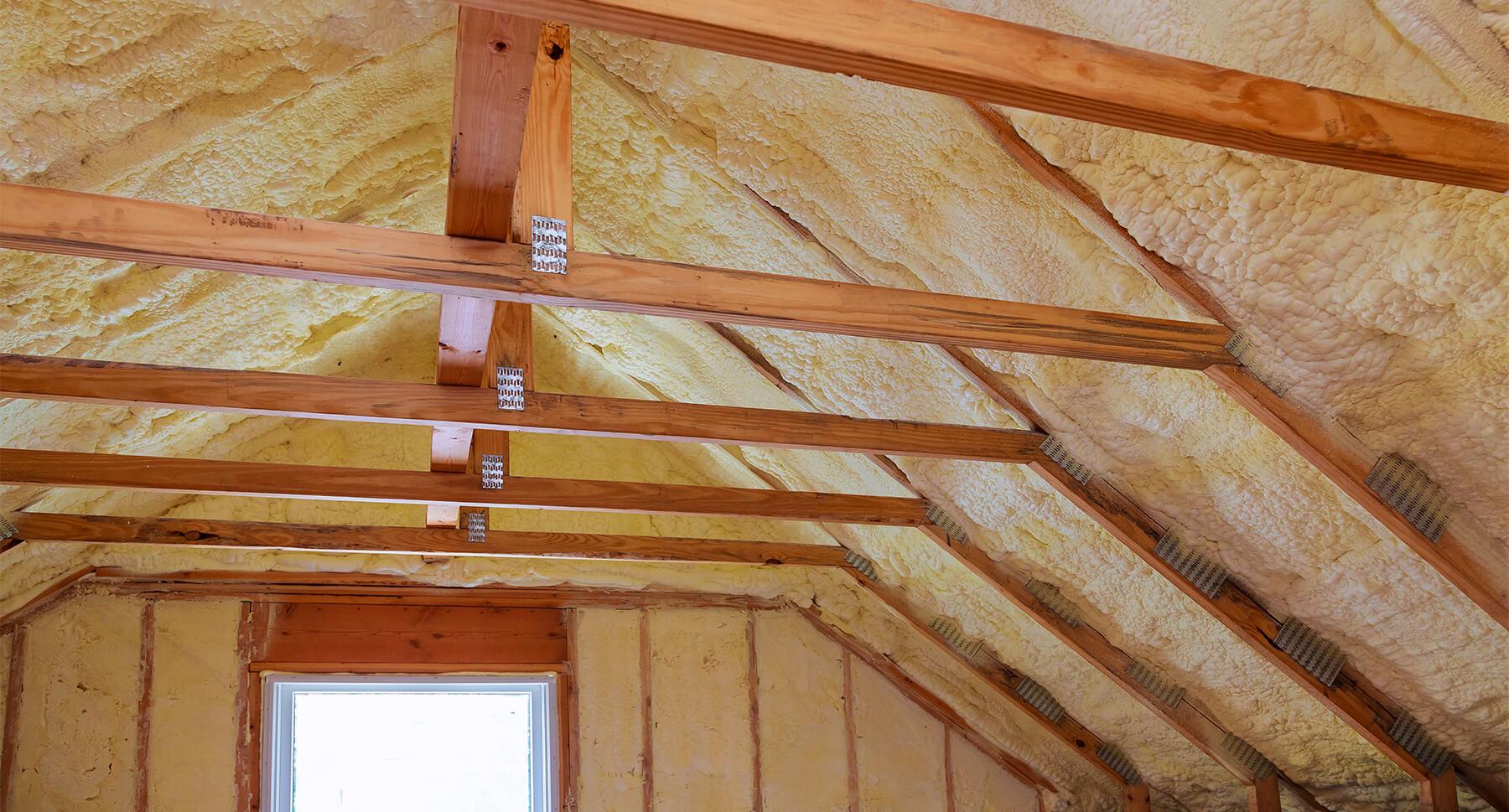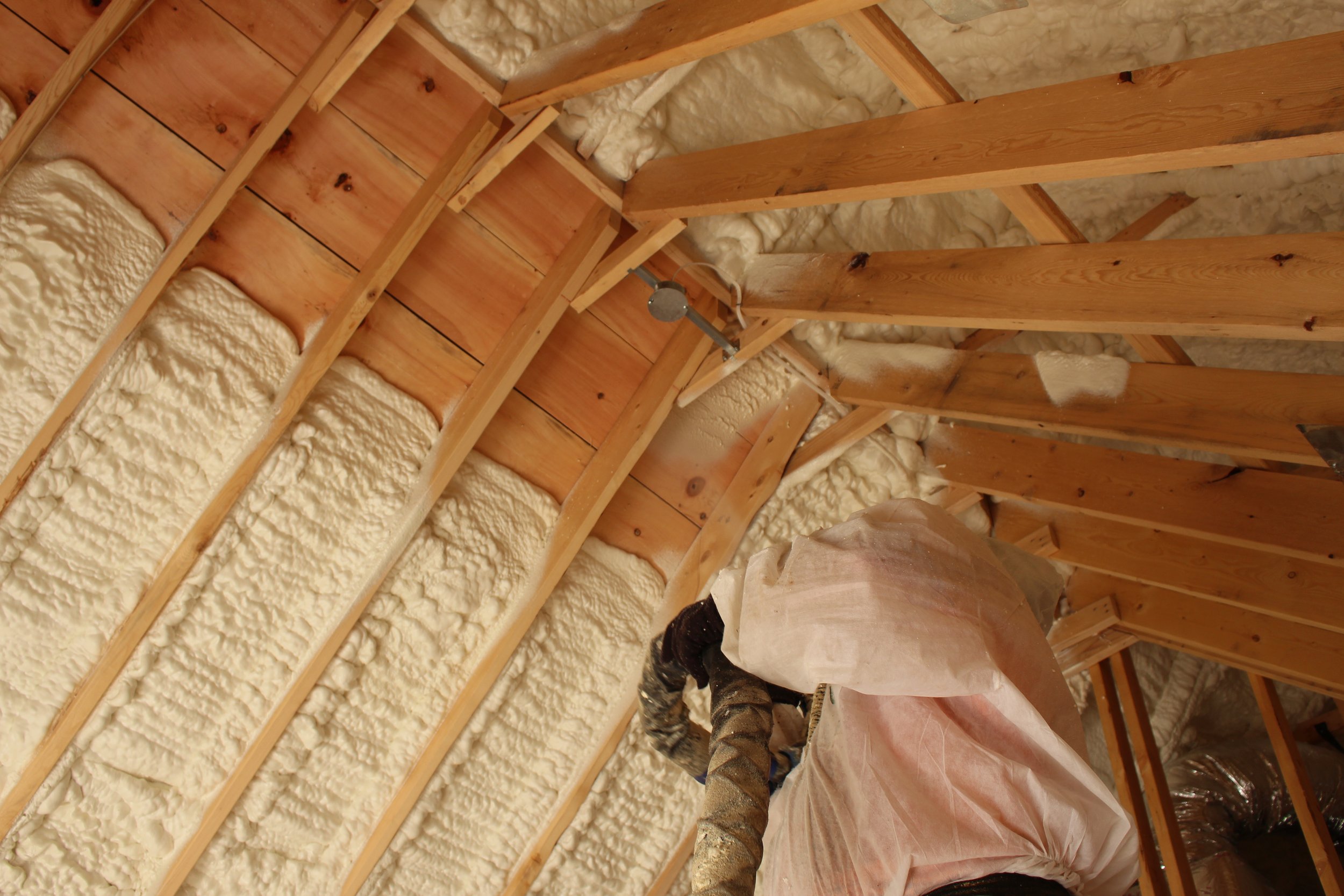Proper residential insulation is the key to controlling home humidity because it creates a complete barrier that stops the two primary ways that moisture enters and accumulates in a home: air leakage and condensation. A high-performance insulation system, particularly one that uses closed-cell spray foam, creates a seamless air seal that prevents humid outdoor air from infiltrating the building. At the same time, its ability to act as a vapor barrier and keep interior surfaces warm prevents the damaging condensation that can lead to mold and rot. By taking control of both air and moisture movement, a professional insulation system allows a home's HVAC system to effectively manage indoor humidity, creating a more comfortable, healthy, and durable living environment.
For homeowners who constantly battle a sticky, damp feeling in their home, especially during the humid summer months, understanding this connection is the first step toward a real solution. Knowing the science behind why homes become humid and how a professional residential insulation system provides a lasting defense is essential. The information is based on the practical, hands-on experience of building performance professionals.
The Two Main Reasons Your Home Feels Humid
A home that feels damp and sticky, even with the air conditioning running, is a home that has lost the battle against moisture. This battle is fought on two main fronts.
1. Uncontrolled Air Leakage
This is the biggest culprit. The average home is full of thousands of tiny, unsealed gaps and cracks. In a hot, humid climate like North Carolina's, these leaks act as a superhighway for hot, moisture-laden outdoor air to pour into your cool, dry, air-conditioned home. This process is known as infiltration.
This constant influx of humid air places a massive load on your air conditioner. An AC unit is designed to do two jobs: cool the air and dehumidify it. When it is forced to deal with a continuous stream of incoming humidity, it can never catch up. This is why a leaky home can feel cool but still uncomfortably damp. Traditional insulation materials like fiberglass batts do nothing to stop this air movement.
2. The Problem of Condensation
Condensation is the other major source of moisture in a home. It occurs when warm, moist air comes into contact with a surface that is cold enough to be at or below the "dew point." In the summer, this happens when that hot, humid air that has leaked into your wall cavity hits the cold backside of your drywall, which is being chilled by your air conditioner. This hidden condensation is a leading cause of mold, mildew, and the slow rot of a home's wooden structure.
How a Professional Insulation System Solves the Humidity Problem
A modern, professionally installed insulation system is designed to create an integrated barrier that effectively controls both air leakage and condensation.
The Power of a Complete Air Barrier
This is the feature that truly transforms a home's ability to manage humidity. Modern insulation solutions like spray foam are unique because they are applied as a liquid and expand to fill every single crack and seam. This creates a nearly perfect, monolithic air barrier. By stopping the uncontrolled infiltration of humid outdoor air, you are cutting off the primary source of the problem. Your HVAC system is no longer fighting a losing battle; it can now effectively and efficiently dehumidify the air that is already inside the house.
The Critical Role of a Vapor Barrier
A vapor barrier is a material that is designed to stop the movement of water vapor itself. This is essential for preventing condensation. Closed-cell spray foam is an "all-in-one" solution because it acts as a high-performance insulator, an air barrier, and a vapor barrier in a single application. Its dense, plastic cell structure is "vapor impermeable," meaning moisture cannot pass through it. When applied to the interior of the home's walls and roof deck, it stops the inward-driven moisture before it can ever reach a cold condensing surface inside the wall.
Here is a look at how different insulation materials perform in controlling humidity:
The Broader Benefits of a Dry Home
The advantages of controlling your home's humidity go far beyond just feeling more comfortable.

A Healthier Indoor Environment
Mold and mildew thrive in damp environments. By keeping your home dry, you are eliminating the conditions that these fungi need to grow. This is a major benefit for your family's health, as mold spores are a primary trigger for allergies and asthma. A dry home is a healthy home.
A More Durable and Protected Structure
Moisture is the single biggest threat to a home's long-term durability. By keeping the wooden framing of your home dry, you are protecting it from the rot and decay that can compromise its structural integrity over time.
Bonus Tip: This concern is especially valid near the foundation, as the crawl space is a major source of humidity in many homes in the Southeast. Moisture from the damp earth can be drawn up into the house, making the entire home feel damp. Encapsulating the crawl space with a vapor barrier on the ground and insulating the foundation walls with closed-cell spray foam is the most effective and permanent solution to this common problem.
Things to Consider for Your Home
- A Systems-Based Approach is Key: A high-performance home is a system. When you make a home very airtight, you must also have a plan for providing fresh, filtered air through a controlled, mechanical ventilation system. This ensures excellent indoor air quality without the energy penalty of random leaks.
- Professional Installation is Not Optional: The performance of spray foam as an air and moisture barrier is 100% dependent on the quality of the installation. It is essential to hire a certified, experienced professional who understands the building science of moisture control in your specific climate.
- Fix All Bulk Water Leaks First: An insulation and vapor barrier system is designed to control condensation and airborne moisture, not bulk water from a leak. Any existing roof leaks or plumbing leaks must be repaired before the insulation is installed.
Final Thoughts on a More Comfortable and Healthy Home
Controlling your home's humidity is not about buying a bigger air conditioner or running a fleet of dehumidifiers. It is about addressing the root cause of the problem: a building envelope that is not equipped to handle the local climate. By choosing a proper residential insulation system that provides a complete and permanent air and moisture barrier, homeowners can take control of their indoor environment, creating a home that is not just more comfortable, but also healthier, more durable, and more efficient for years to come.
Get a Professional Home Humidity Assessment
If you are tired of that sticky, damp feeling in your home and are concerned about the potential for hidden moisture problems, the first step is a professional evaluation. An experienced insulation contractor can diagnose the sources of your humidity issues and design a targeted solution. For homeowners in the Raleigh area, the team at Raleigh Excel Spray Foam Insulation has deep expertise in solving the unique challenges of the local climate. They can be reached for a consultation by email at [email protected] or by phone at (919) 301-9435.
This article was reviewed for technical accuracy by William Harris, an insulation professional with nearly a decade of experience in the spray foam field.






Comments